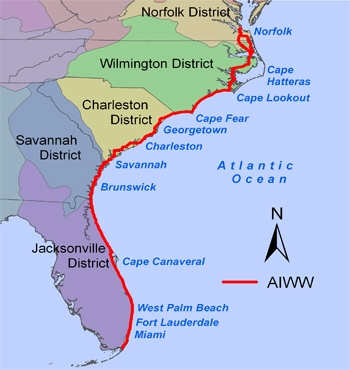We spent two long (80 mile/9hr) days and a third shorter (~35 mile/4hr) day making our way from Ft Pierce to St Augustine.
We are now traveling along the Atlantic Intracoastal Waterway (AICW) which extends more than 1,100 miles from Key West, Florida to Norfolk, Virginia. The AICW allows for travel without having to be in the open ocean.
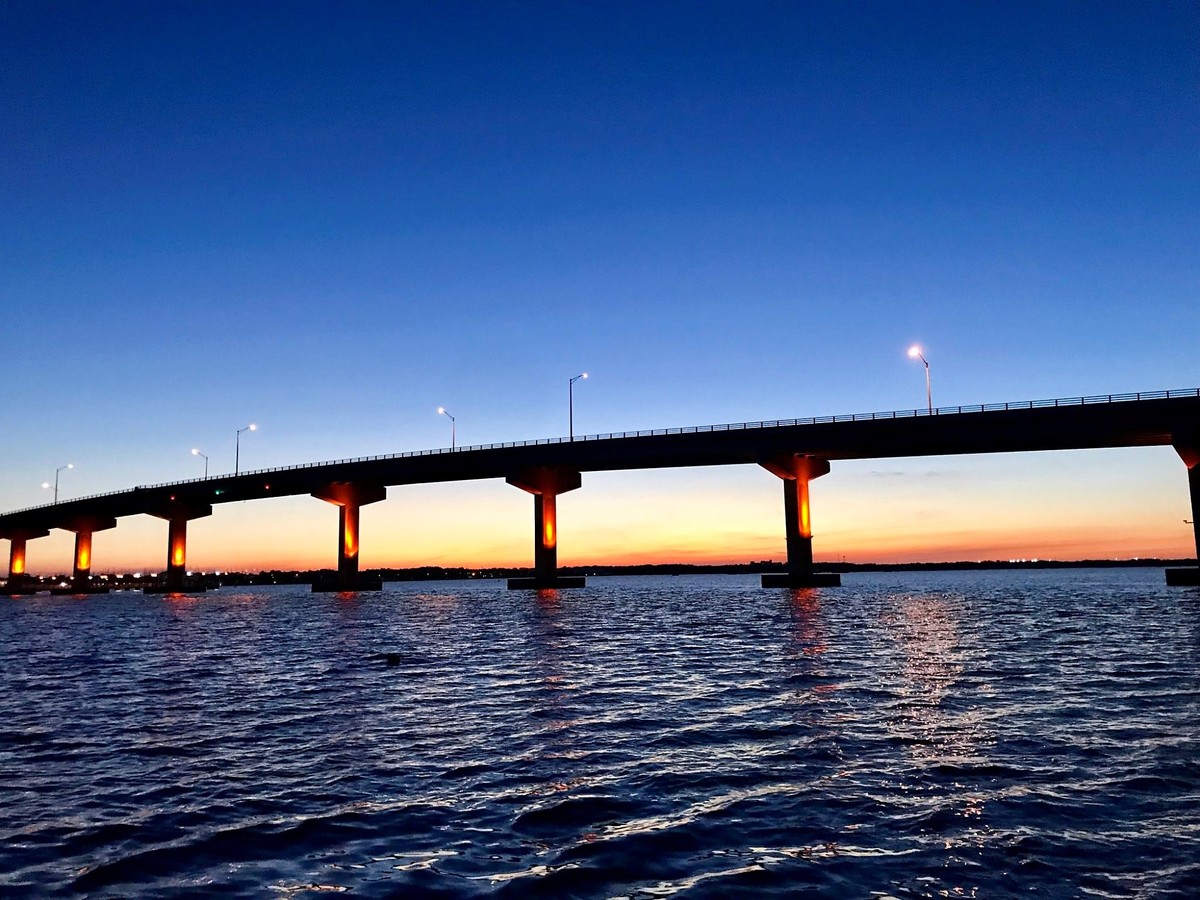 Anchoring for the night off the AICW next to a bridge in Titusville, FL. |
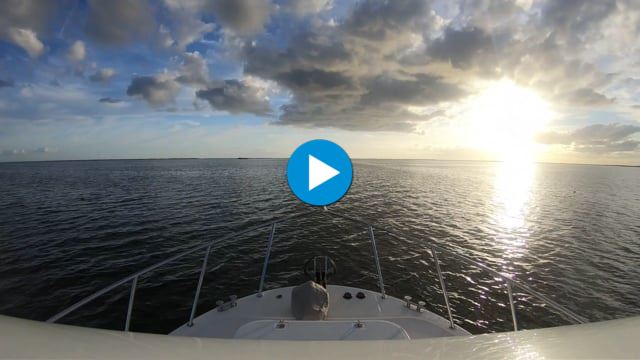 Morning commute midweek on the AICW. Not a lot of water traffic is a good thing, weekend travel would have had significantly more traffic. |
When we arrived in St Augustine we tied up to a mooring ball and set out to see the oldest city in the United States (St Augustine was founded in 1565 by the Spanish). While it is not our preferred way to sight see we did buy tickets for a hop on/off tour bus. This was a good decision as it gave us on day 1 an understanding of the city’s layout and a solid background of it’s history. The following days we set out on foot (logging 10+ miles a day) to visit several historical sites, museums and points of interest. A few highlights below –
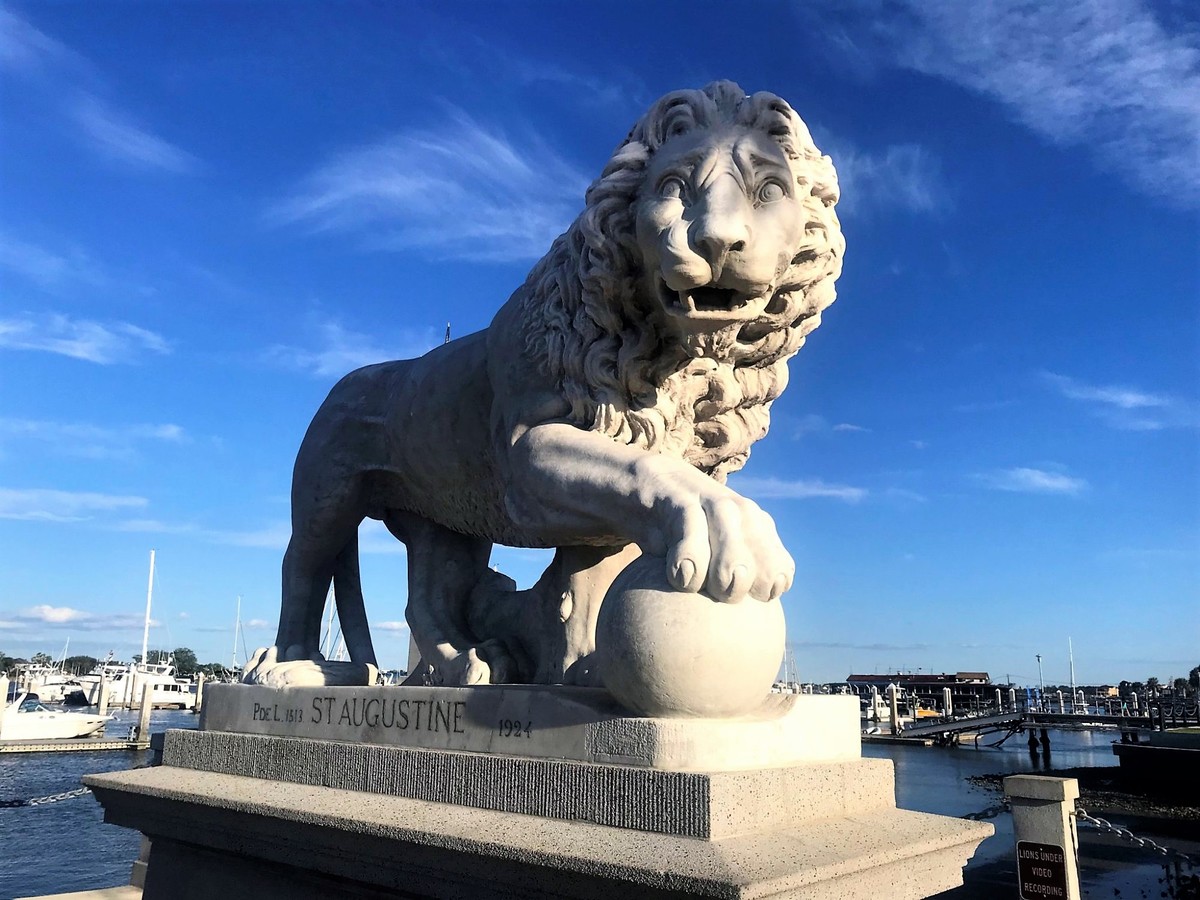 Large marble statues decorate the Bridge of Lions which spans the AICW in downtown St Augustine. |
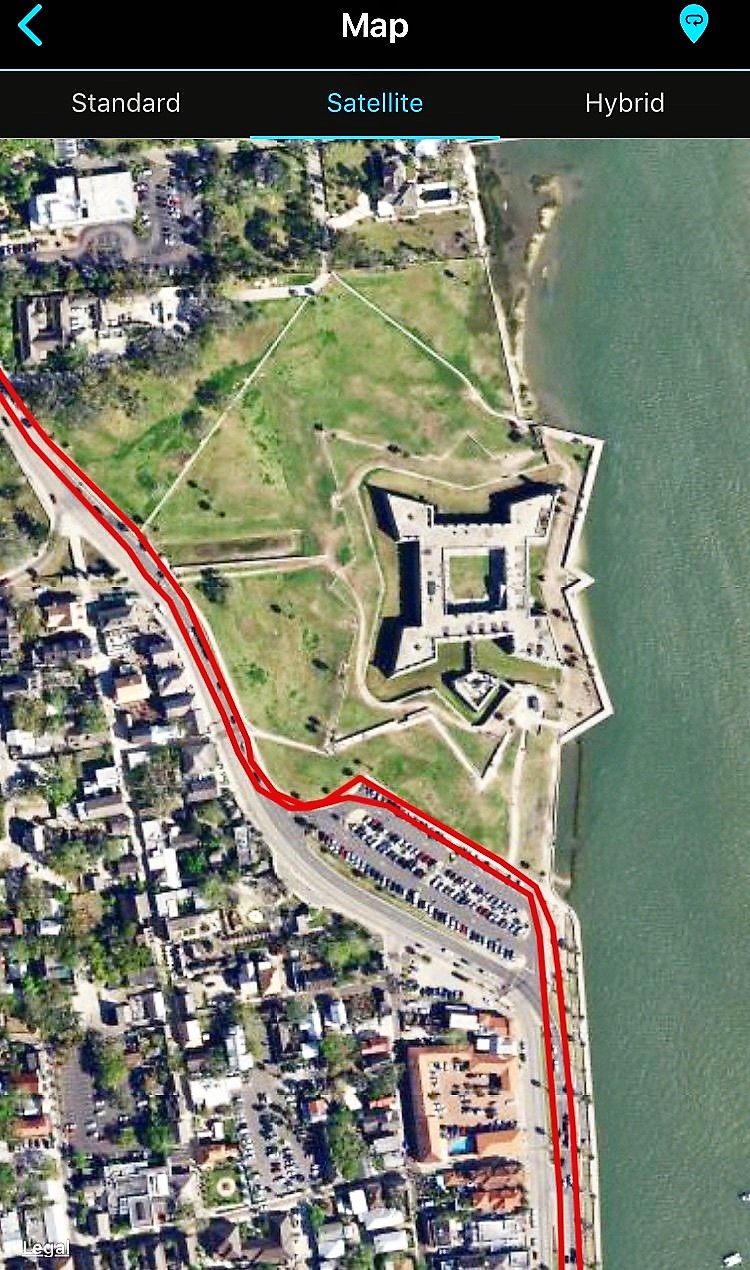 Castillo de San Marcos overhead view – red lines represent one of my mornings run along the waterfront. This fort is over 300 years old, covers 20 acres and today is managed by the National Park Service. The summary picture for this blog entry shows our view of the fort from our mooring ball. We loved our view. |
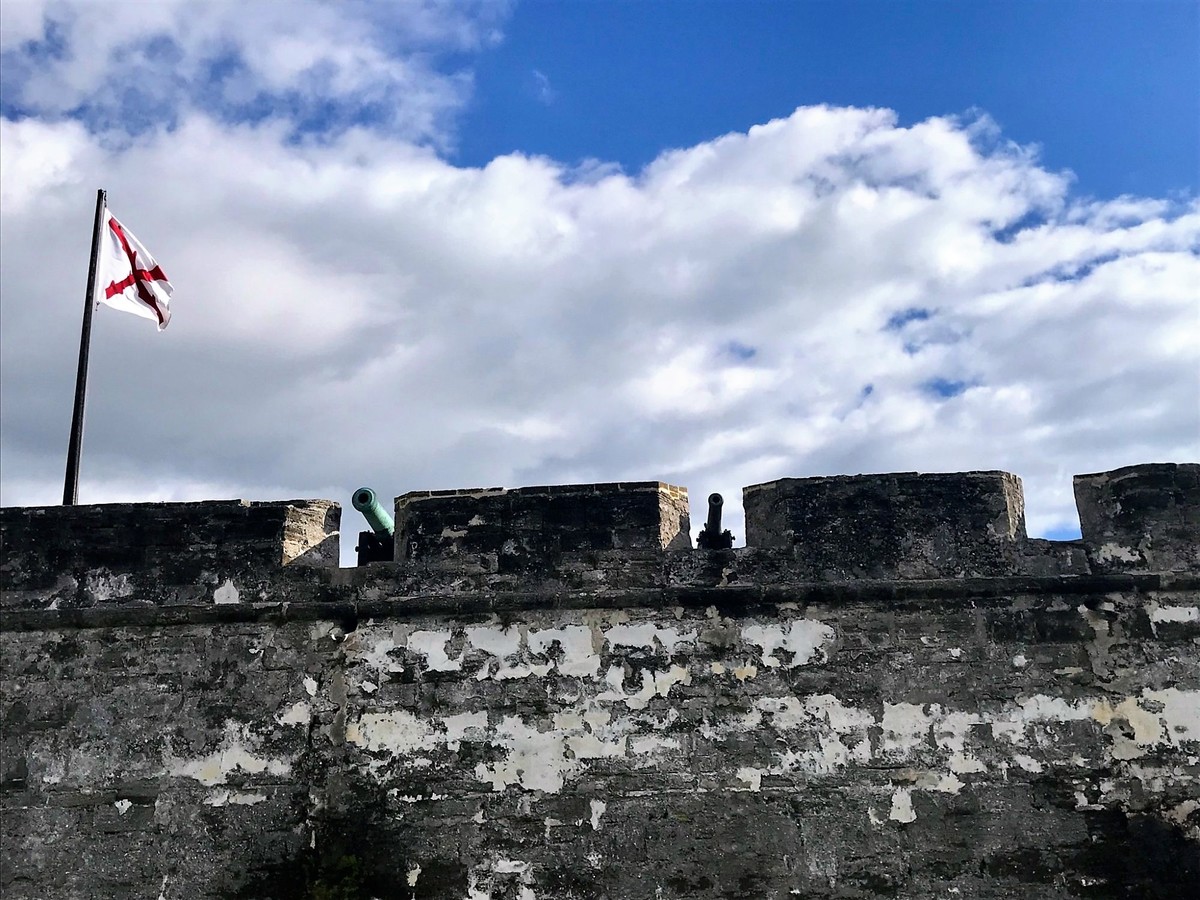 The fort’s construction was started in 1672 and it is made of coquina stone (similar to limestone). Coquina would absorb any artillery fire and proved to be very durable. |
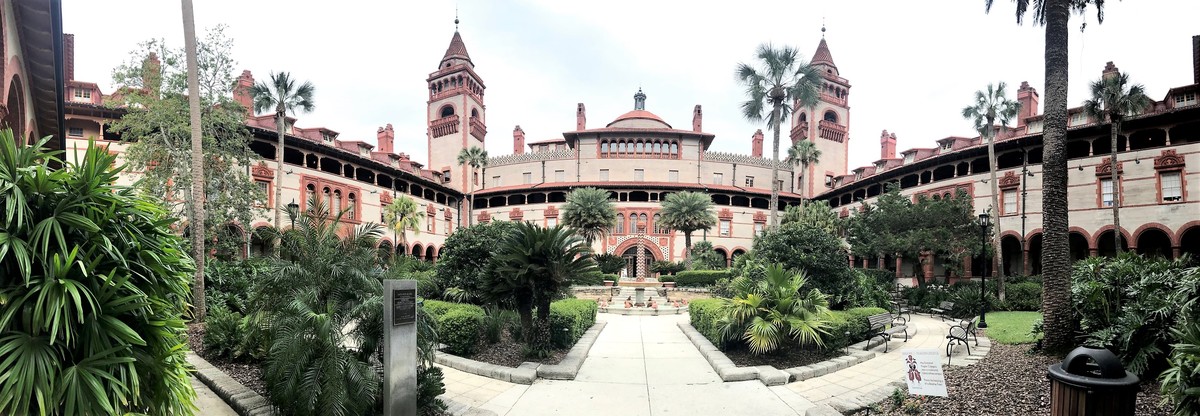 Present day Flagler College, formally the Ponce de Len Hotel which was built in 1888 as a luxury hotel. This was one of the favorite tours we did. |
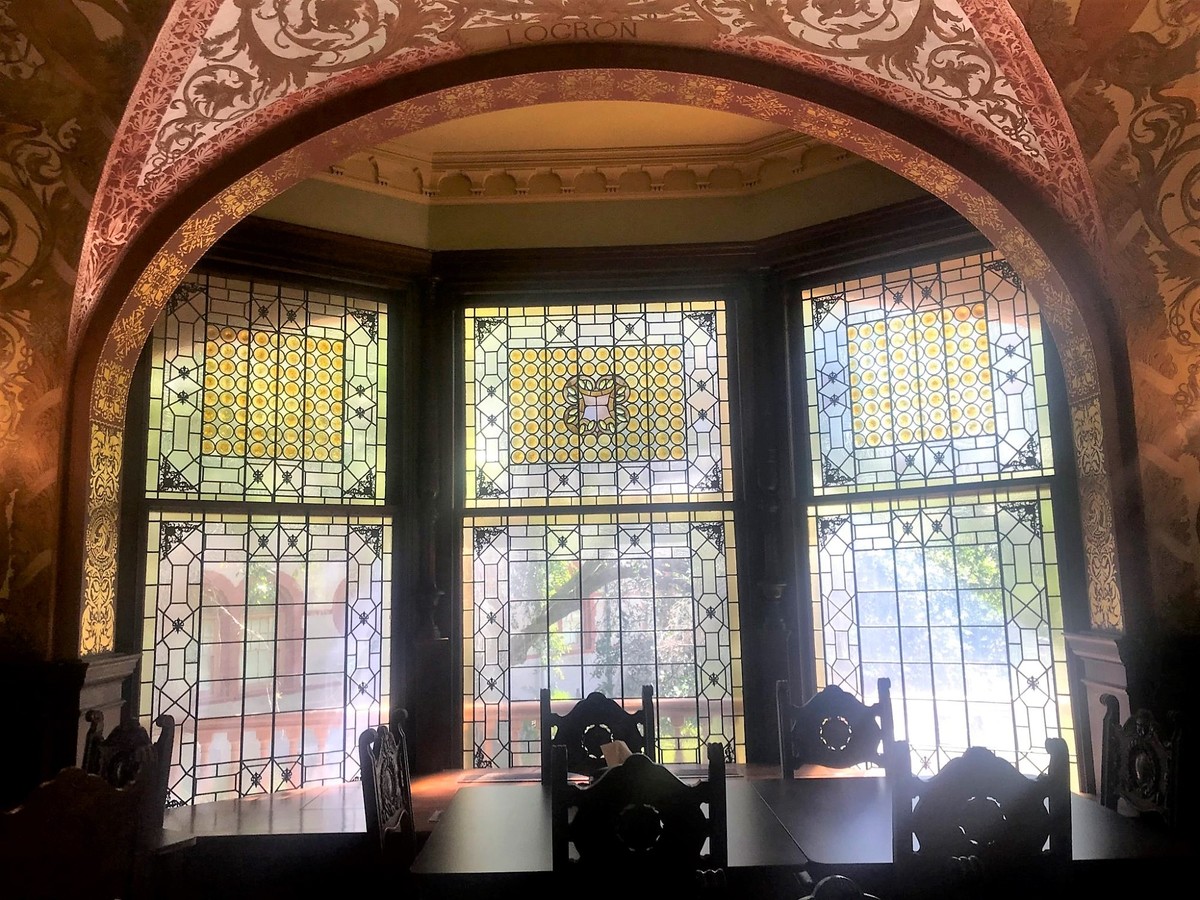 Flagler College dining room where students dine among 79 Louis Comfort Tiffany Stained Glass windows. |
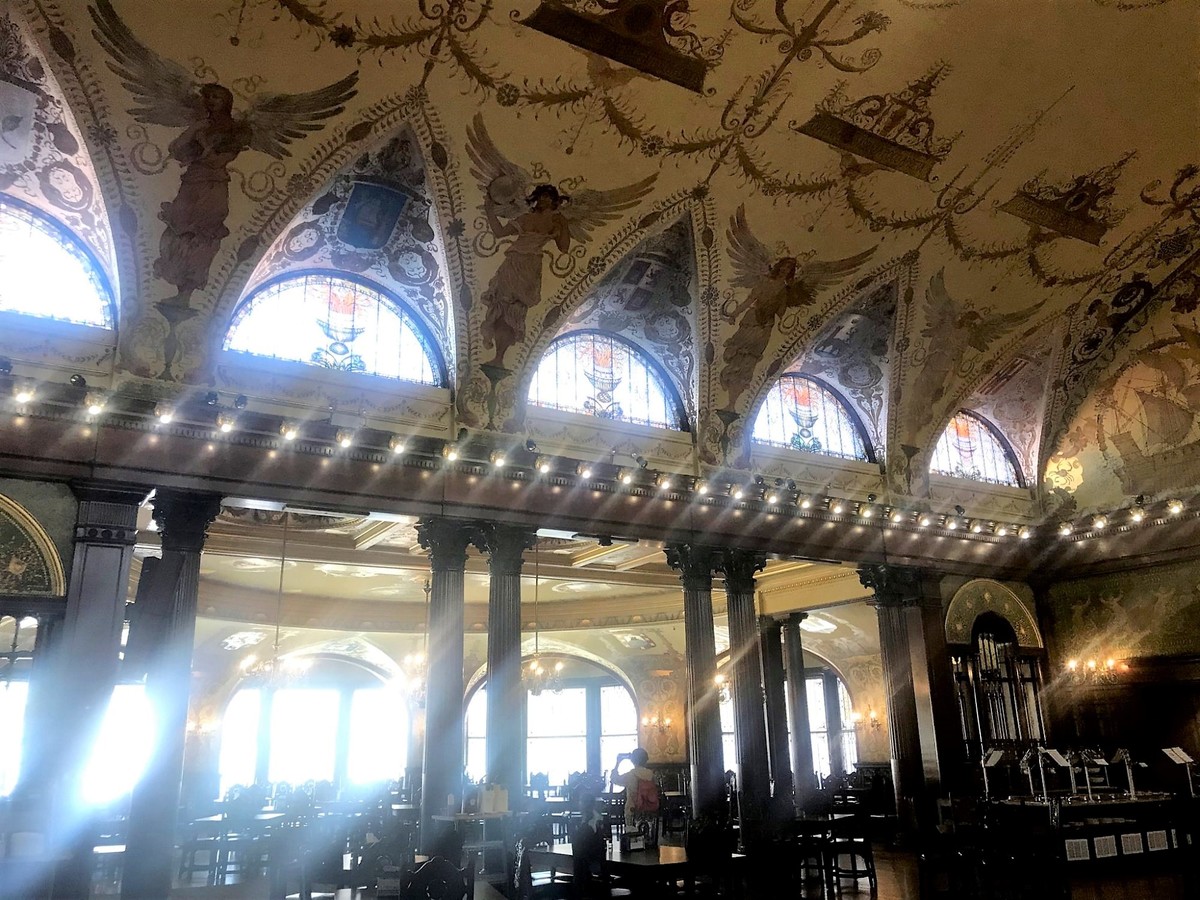 Not the best picture but every window is Tiffany stained glass. |
 Lightner Museum which is inside the former historic Hotel Alcazar building. This hotel was built in 1887 and where a cafe sits now used to be the worlds largest indoor swimming pool. You can dine in the deep end! |
After 4 nights in St Augustine we headed north and crossed into Georgia. We have started a a new tradition – find 3 quick facts about the new state as we are crossing into. Thanks in advance to Wikipedia for making this tradition an easy one.
Random facts: Georgia
- Admitted to the Union in 1788 (4th state).
- Was the last Confederate state to be restored to the Union in 1870.
- Is the largest state east of the Mississippi River.
Our first two nights in Georgia we spent anchored at Cumberland Island. Cumberland Island is a National Park and is the 2nd National Park we were able to visit during National Park Week (the 1st being Castillo de San Marcos in St Augustine).
We splurged on a guided tour and it was absolutely worth it. Our guide (Mike) from the Land and Legacies tour company was fantastic. Mike’s storytelling and his deep knowledge of history kept us completely hooked during the entire 6 hour tour. We were able to see a lot of the island this way but would absolutely stop here again, it is just a stunning and peaceful place.
 Large oaks with spanishmoss decorate Cumberland Is. Its absolutely beautiful any time of day. |
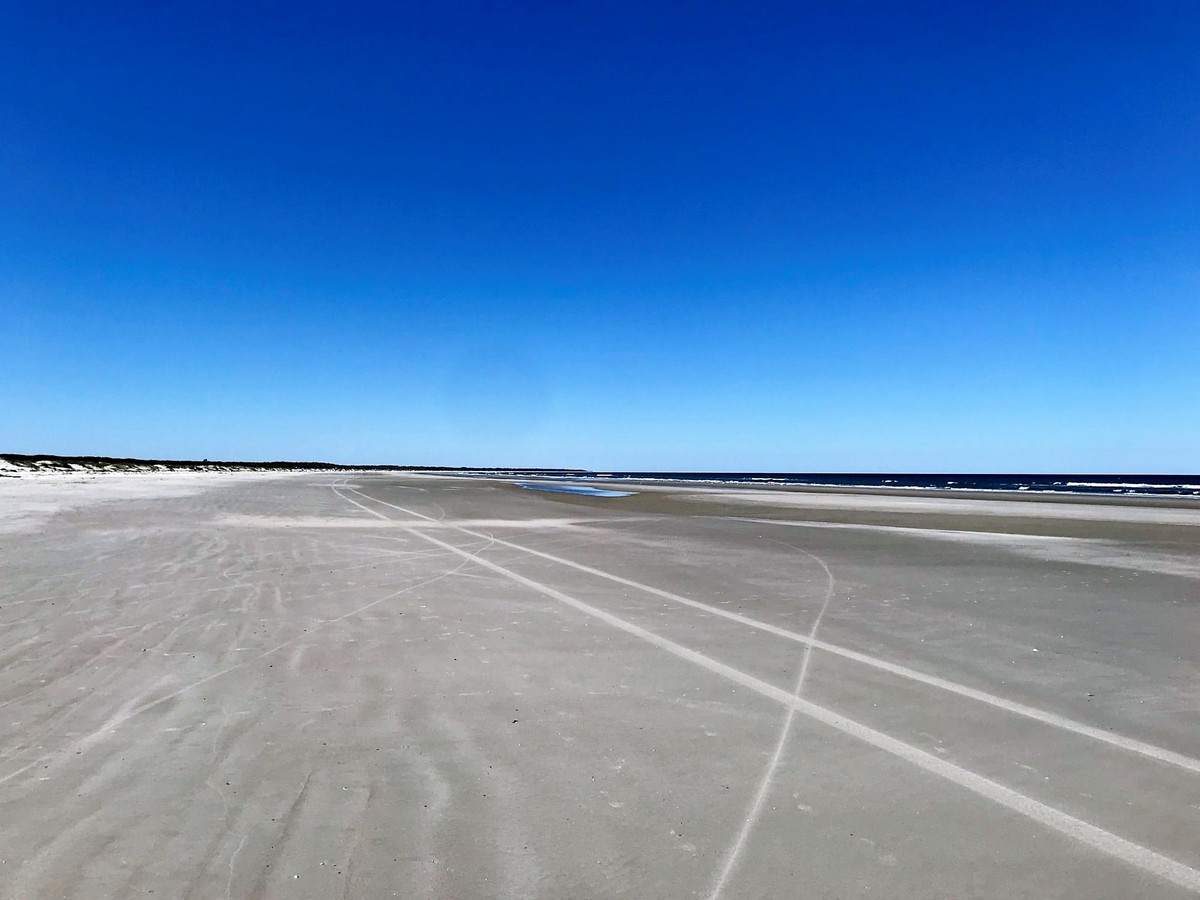 Hard packed, practically deserted and seemingly endless the Cumberland Is. beach made for perfect walking and running. |
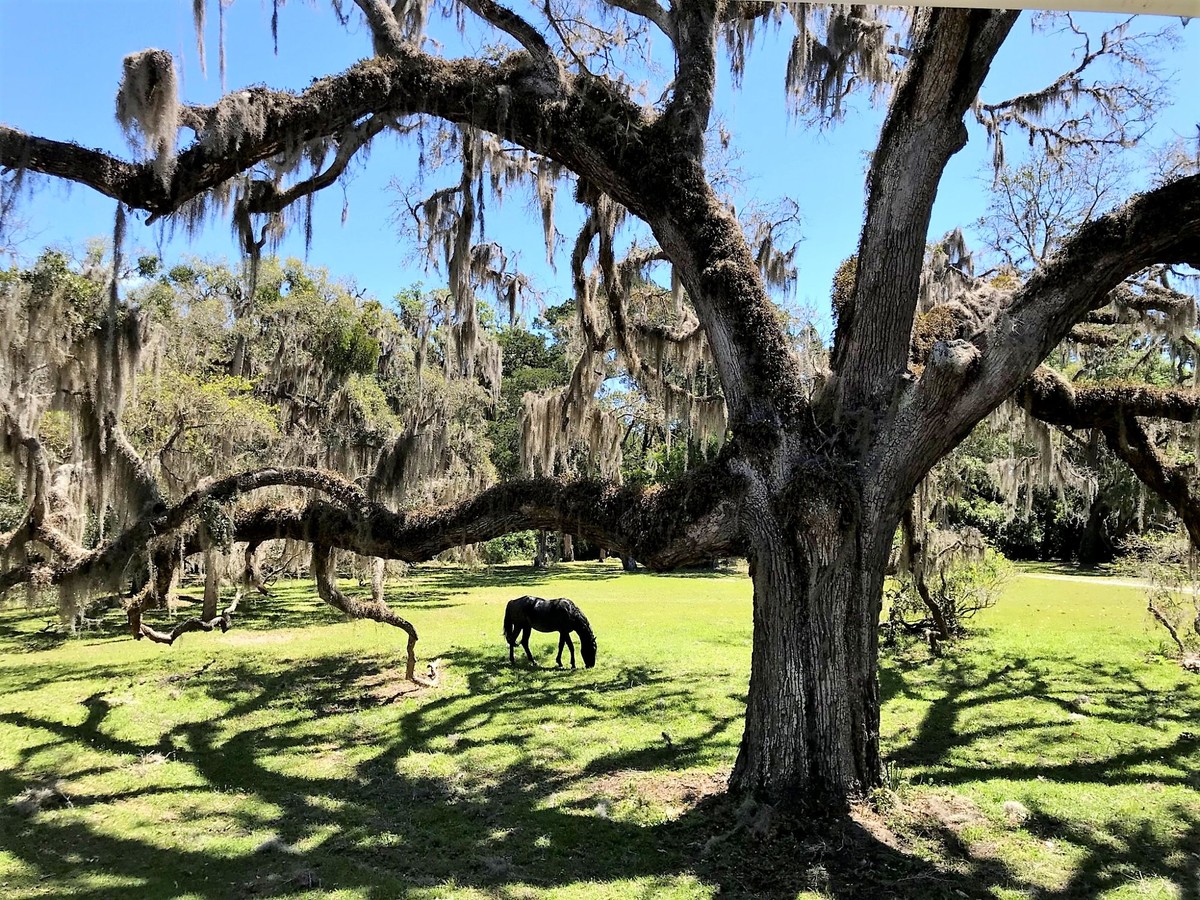 Approx 150 wild horses make Cumberland Is. their home. This place would be considered heaven to my sister (Laura Brown). |
 We did not just see horses on the island – this was a big 8′ alligator just waiting for lunch. Turkeys and armadillos were also sighted on different parts of the island. |
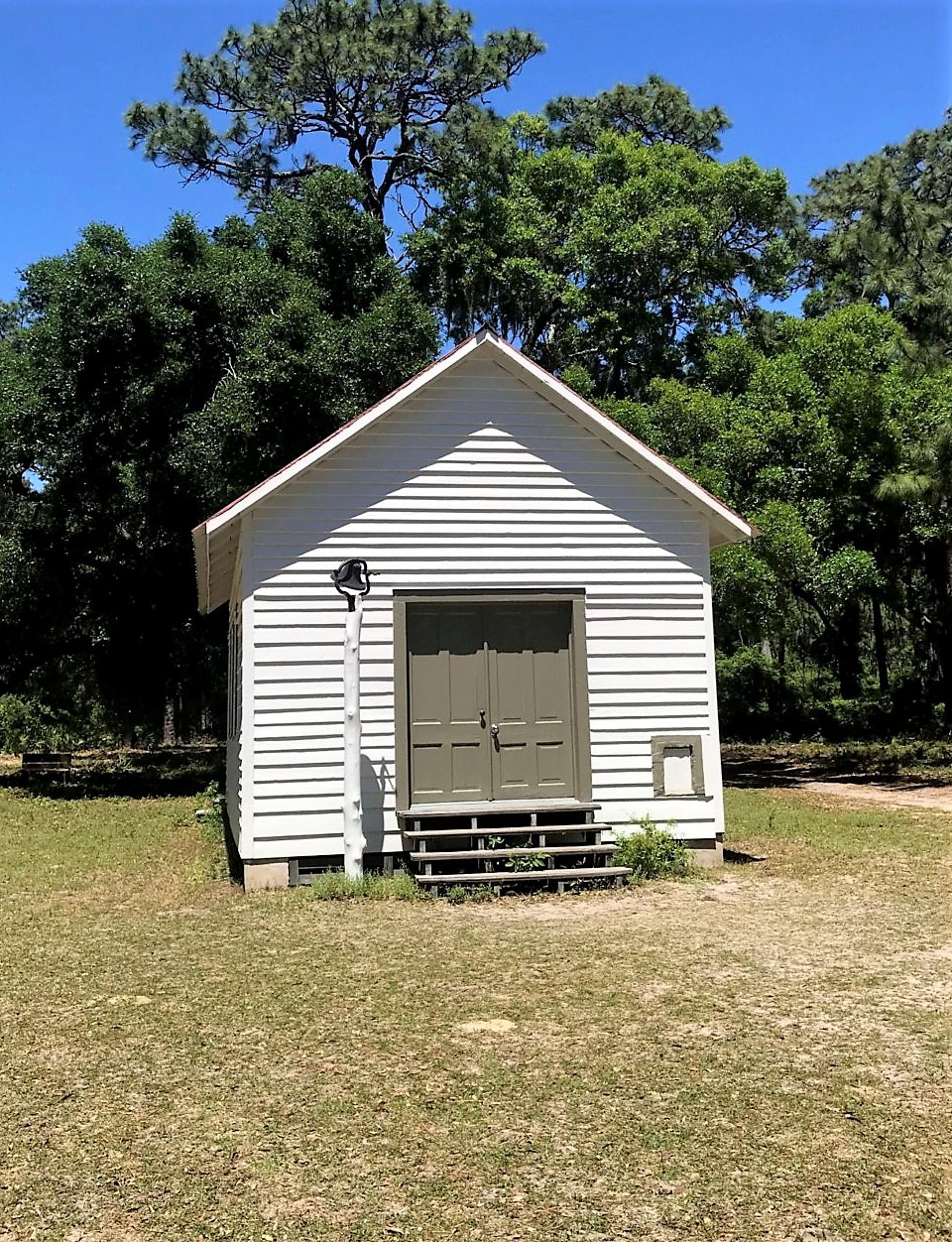 In 1996 JFK Jr was married in this small Baptist Church on the island with 40 friends/family in attendance. The media had no idea giving the family a rare moment to themselves. |
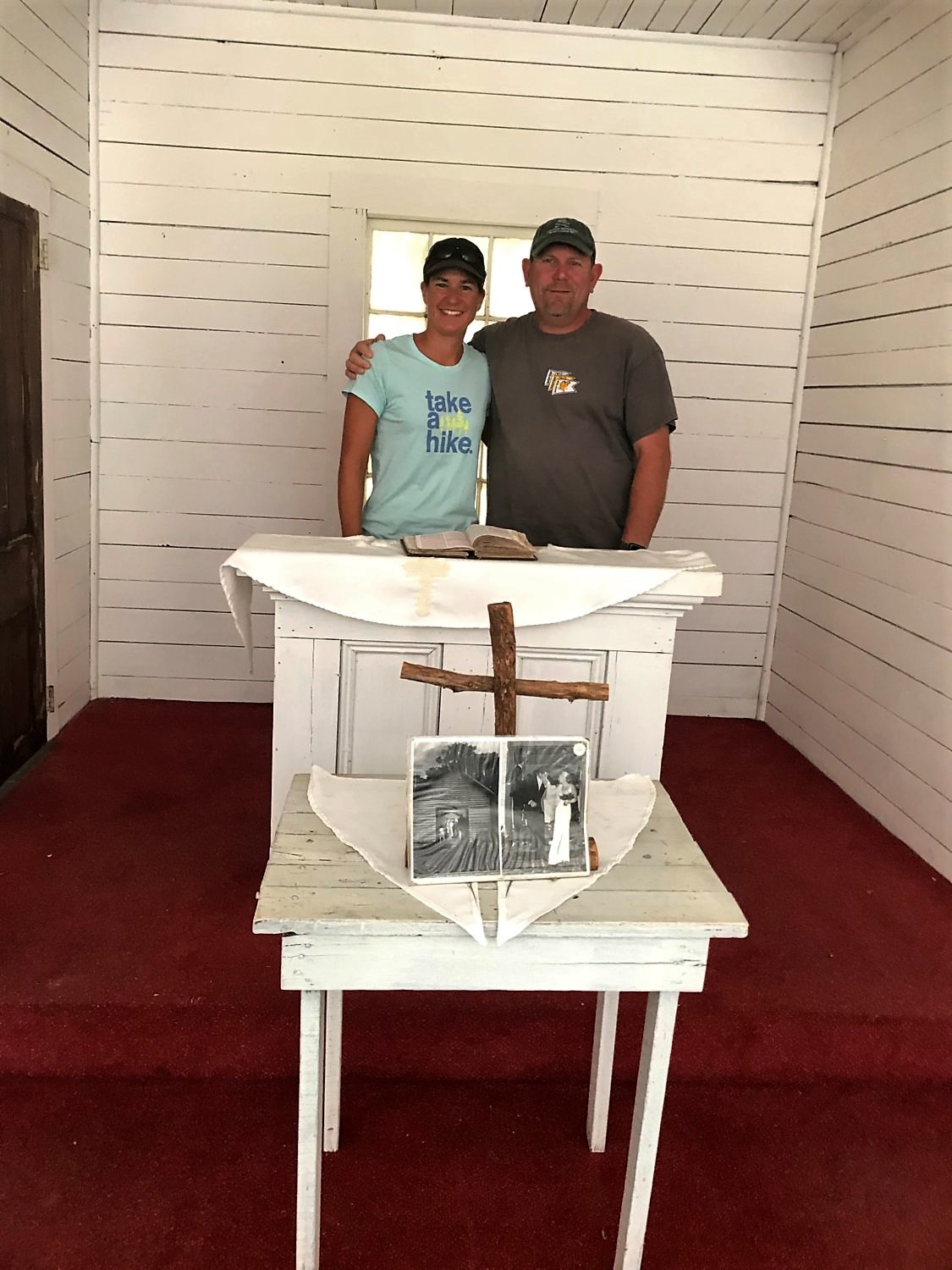 Inside the church. |
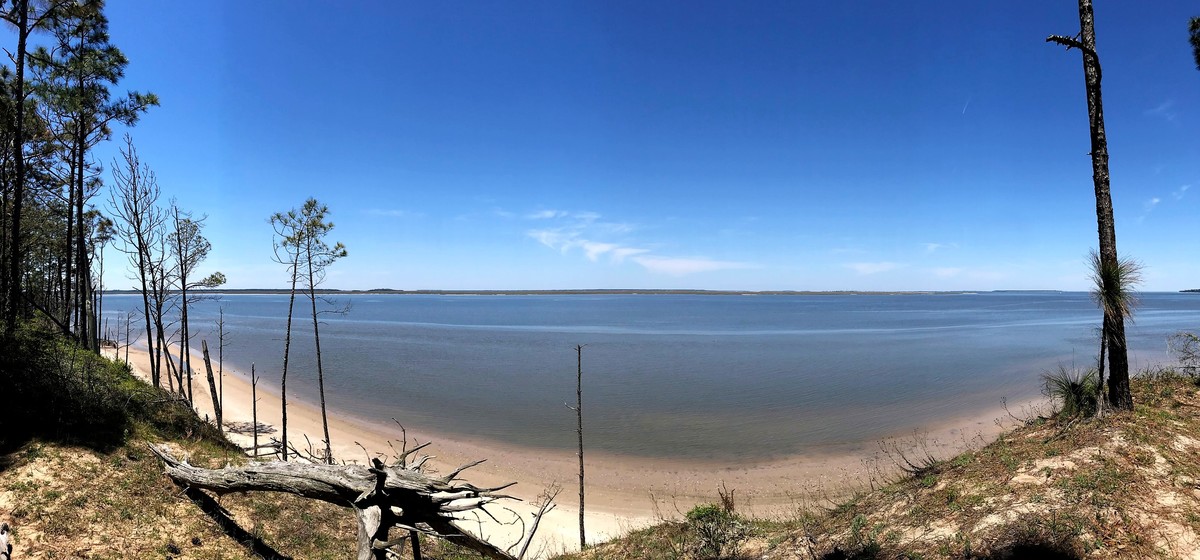 Halfmoon Bluff on Cumberland Is., simply stunning. |
 On the north side of the island is Plumb Orchard. This 22,000 sq ft mansion was built in 1898 as a summer home for members of the Carnegie family. We spent an hour touring inside this gem, it is in remarkable condition and truly an example of 20th century high society. |
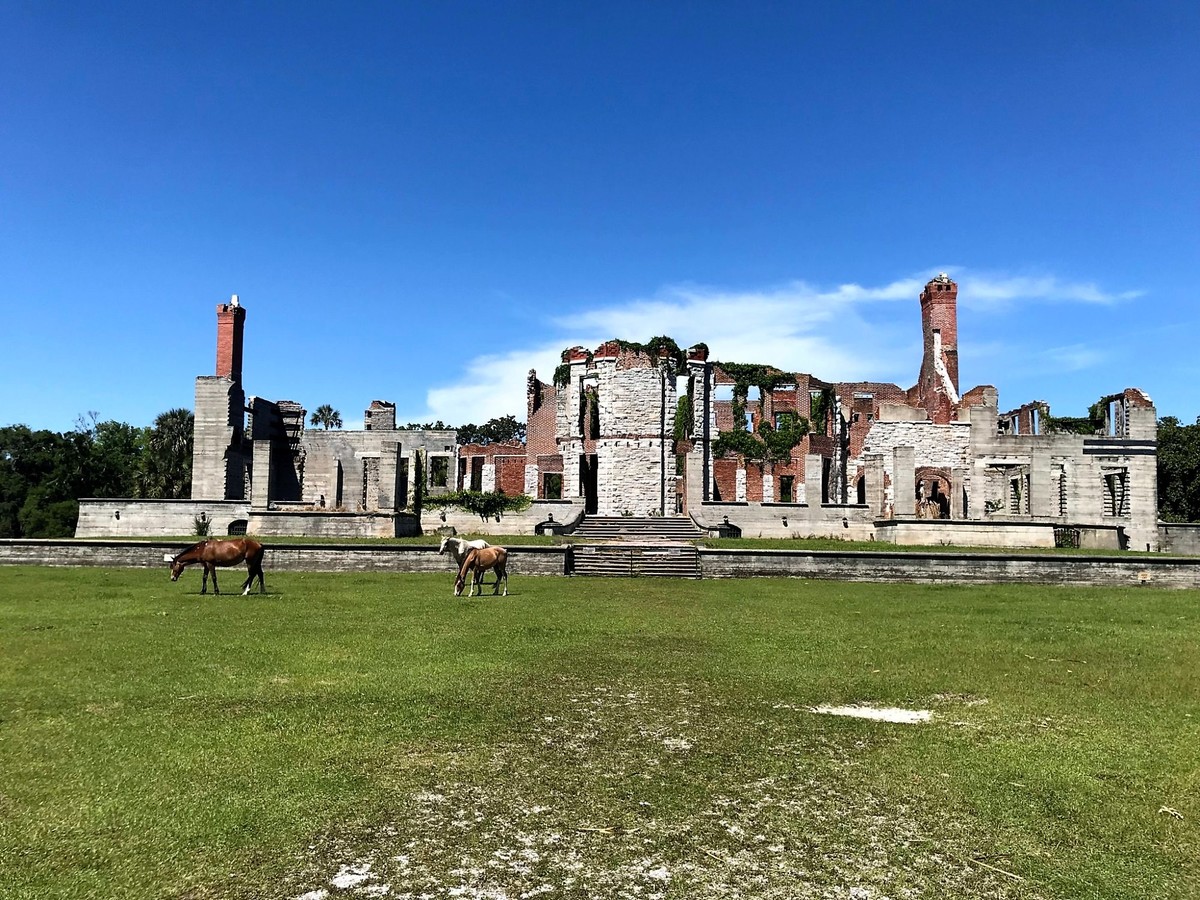 On the south end of the island are the ruins of Dungeness. Built in 1884 it burned in 1959. The mansion was 35,000 sq ft and another example of a luxury home for Carnegie family members. |
This entry feels like we are sharing only 2% of all that we saw and learned in the past week. Both St Augustine and Cumberland Island have a deep and intriguing history. We set out on The Great Loop to learn more about our country’s history and this week certainly delivered just that.
